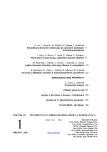-
Medical journals
- Career
Likvorea in pediatric patients with craniocerebral injury
Authors: Eva Brichtová; David Starý; Ladislav Plánka; Štěpánka Bibrová; Bronislav Hnilička
Authors‘ workplace: Department of Pediatric Surgery, Orthopedics and Traumatology, University Hospital Brno ; Klinika dětské chirurgie, ortopedie a traumatologie FN Brno
Published in: Úraz chir. 18., 2010, č.1
Overview
Introduction:
Fractures of the skull base may occur alone or continuing calvariar fissures into the base of the skull. Dura mater adheres firmly to the cranial base, therefore dural rupture occurs during fractures and intracranium communication with the external environment and likvorea are developed.Material and methods:
The authors present a set of 19 pediatric patients suffering from likvorea after the skull base fracture during the period of 7 years. 11 patients experienced otorrhea, 6 patients nasal likvorea and 2 patients a combination of rhinorrhea and otorrhea.Results:
15 patients (79%) were treated conservatively, 4 patients (21%) in the age groups 15-18 years underwent emergency neurosurgical treatment with the skull base duroplasty. In one patient with anterior cranial fossa fracture post-traumatic meningitis occured, which was treated conservatively by using antibiotics.Conclusion:
In pediatric patients, lower likvorea incidence than in adults is reported. Yet likvorea remains a serious post-traumatic condition, which results in breach of the central nervous system and outer environment barrier with intracranial infection threat.Keywords:
likvorea, craniocerebral injury, fracture of the skull base, rhinorrhea, otorrhea, meningitis, childhood, skull base duroplasty.
Sources
1. BALTAS, I., TSOULFA, S., SAKELLARIOU, P. et al. Posttraumatic meningitis: Bacteriology, hydroce-phalus, and outcome. Neurosurgery. 1994, 35, 422–427.
2. BRICHTOVÁ, E. Kraniocerebrální poranění v dět-ském věku. 1.vyd. Praha: Triton, 2008. 140 s.
3. COOPER, PR. Cerebrospinal fluid fistulas and pneu-mocephalus. In: BARROW, DI. Complications and Sequelae of Head Injury, Park Ridge. American Association of Neurological Surgeons. 1992, 1–12.
4. LIU-SHINDO, M., HAWKINS, DB. Basilar skull fractures in children. Int J Pediatr Otorhinolaryngol. 1989, 2,109–117.
5. MCGUIRT, WF Jr., STOOL, SE. Cerebrospinal fluid fistula: the identification and management in pediatric temporal bone fractures. Laryngoscope. 1995, 4, 359–364.
6. NÁHLOVSKÝ, J. et al. Neurochirurgie. 1.vyd. Pra-ha: Galén, 2006. 581 s.
7. SHAPIRO, SH., SCULLY, T. Closed continuous drainage of cerebrospinal fluid via a lumbar subara-chnoid catheter for treatment or prevention of cranial - spinal fluid fistula. Neurosurgery. 1992, 30, 241–248.
8. SCHOLSEM, M., SCHOLTES, F., COLLIGNON, F. et al. Surgical management of anterior cranial base fractures with cerebrospinal fluid fistulae: a single-institution experience. Neurosurgery. 2008, 2, 463 – 469.
9. SMRČKA M. et al. Poranění mozku. 1.vyd. Praha: Grada Avicenum, 2001, 272 s.
10. TAHA, JM., HADDAD, FS., BROWN, JA. Intracra-nial infection after missile injuries to the brain: Re-port of 30 cases from the Lebanese conflict. Neuro-surgery. 1991, 29, 864–868.
11. WILSON, NW., COPELAND, B., BASTIAN, JF. Posttraumatic meningitis in adolescents and children. Pediatr Neurosurg. 1990-91, 16, 17–20.
Labels
Surgery Traumatology Trauma surgery
Article was published inTrauma Surgery

2010 Issue 1
Most read in this issue- TREATMENT OF RADIAL HEAD FRACTURES OF MASON II TYPE IN ADULTS
- Complications of Plate and Screw Fixation in Metacarpal Fractures
- Perilunar dislocation of the wrist, adequate method of treatment
- Likvorea in pediatric patients with craniocerebral injury
Login#ADS_BOTTOM_SCRIPTS#Forgotten passwordEnter the email address that you registered with. We will send you instructions on how to set a new password.
- Career

